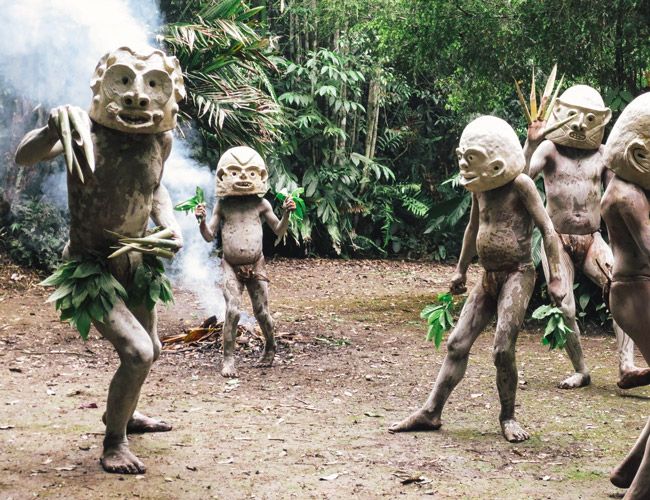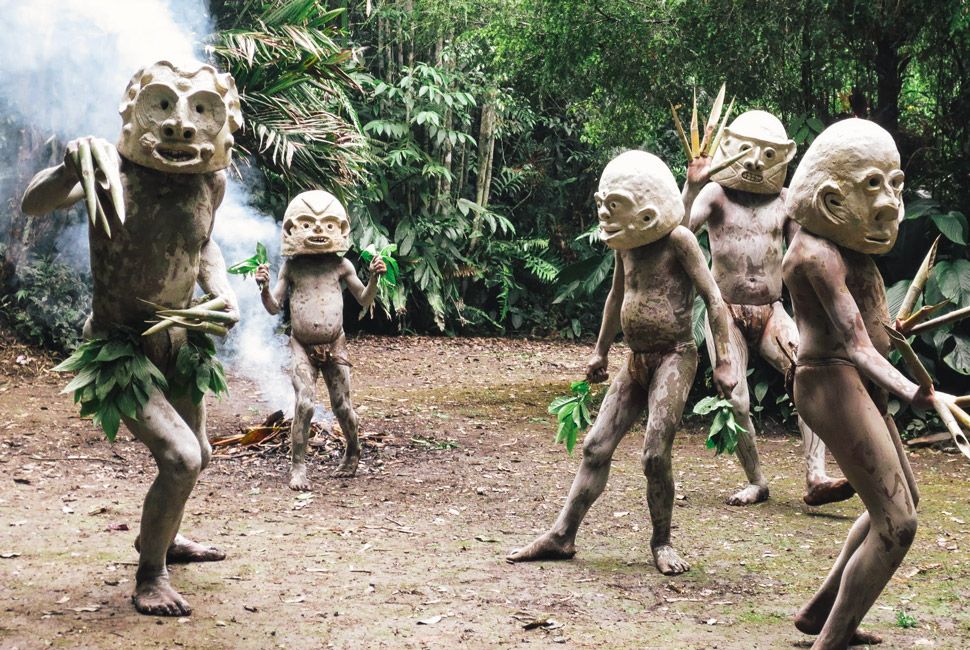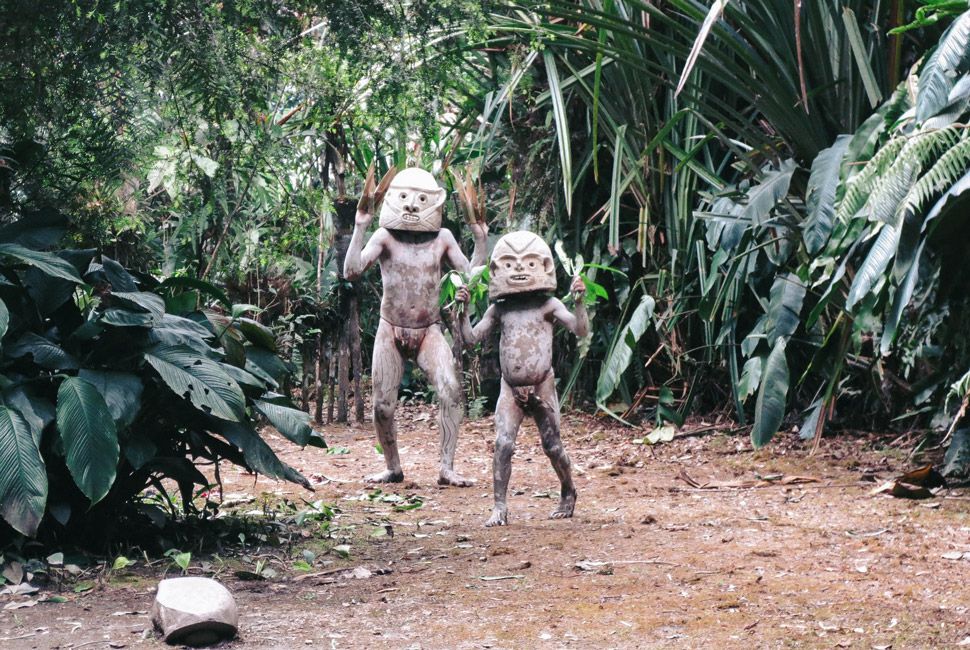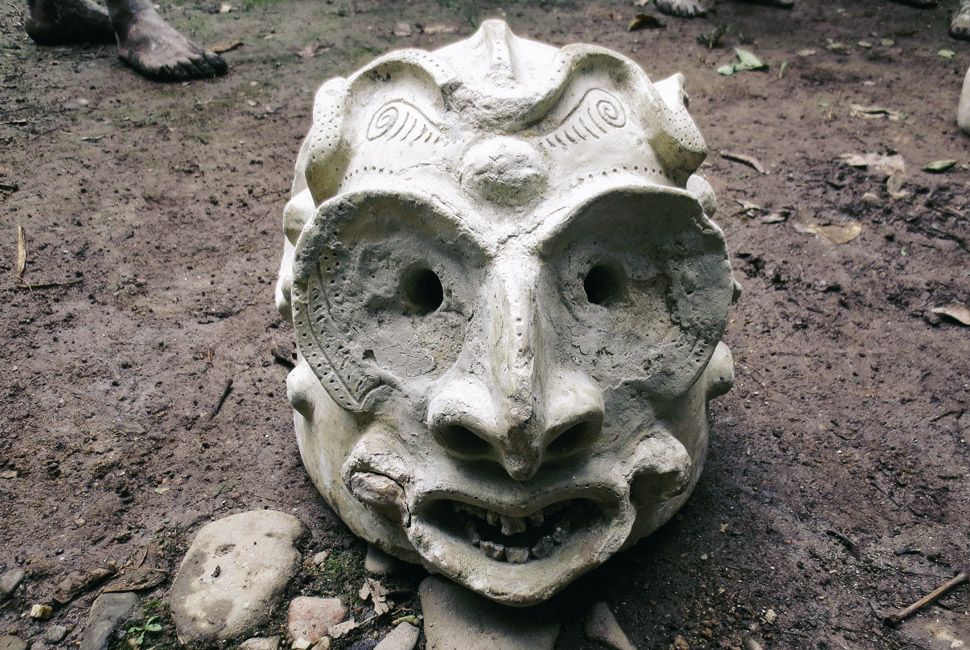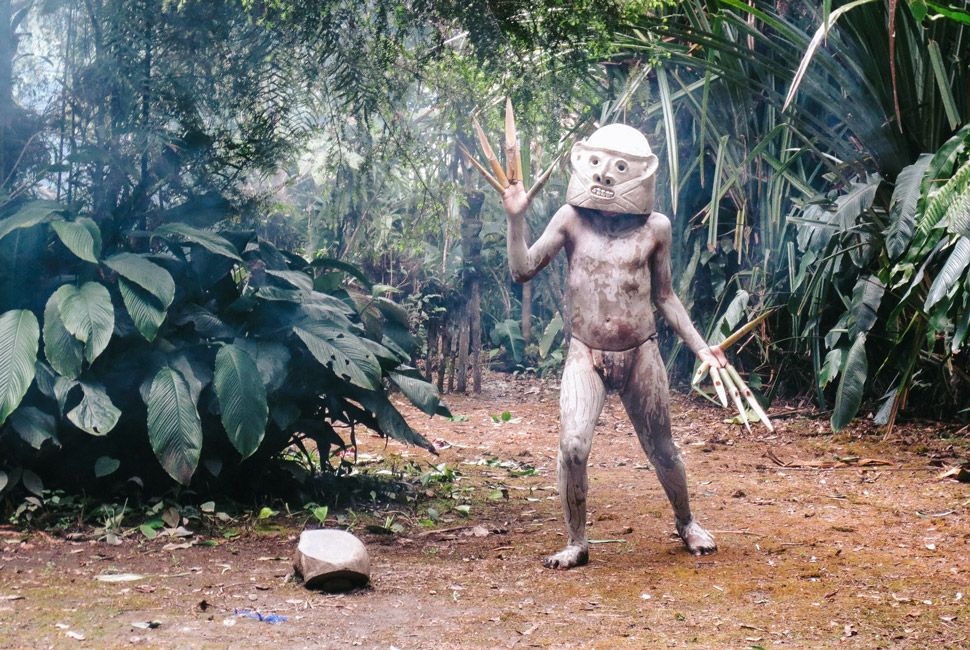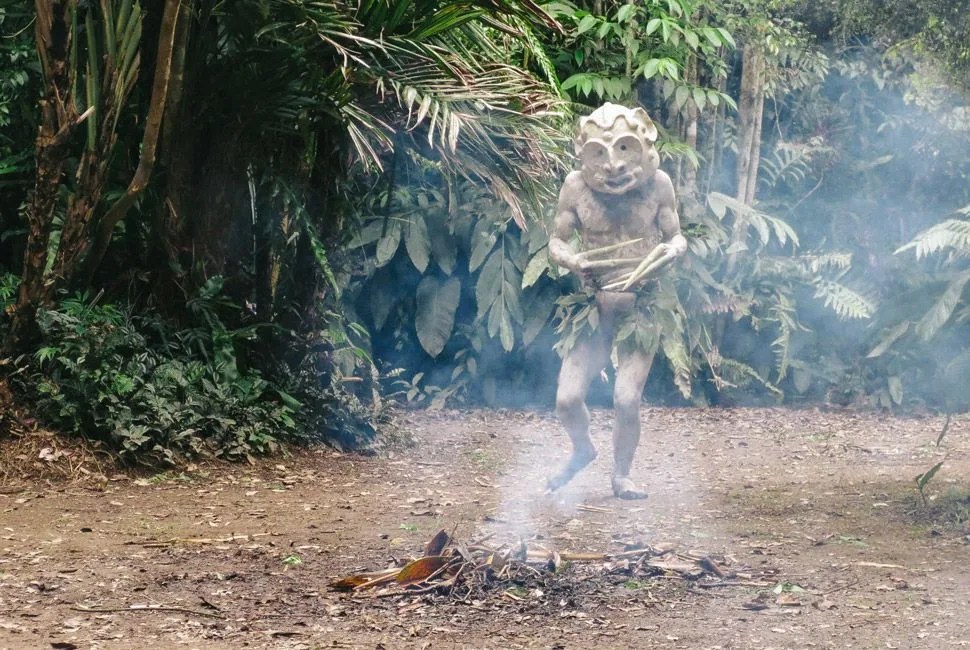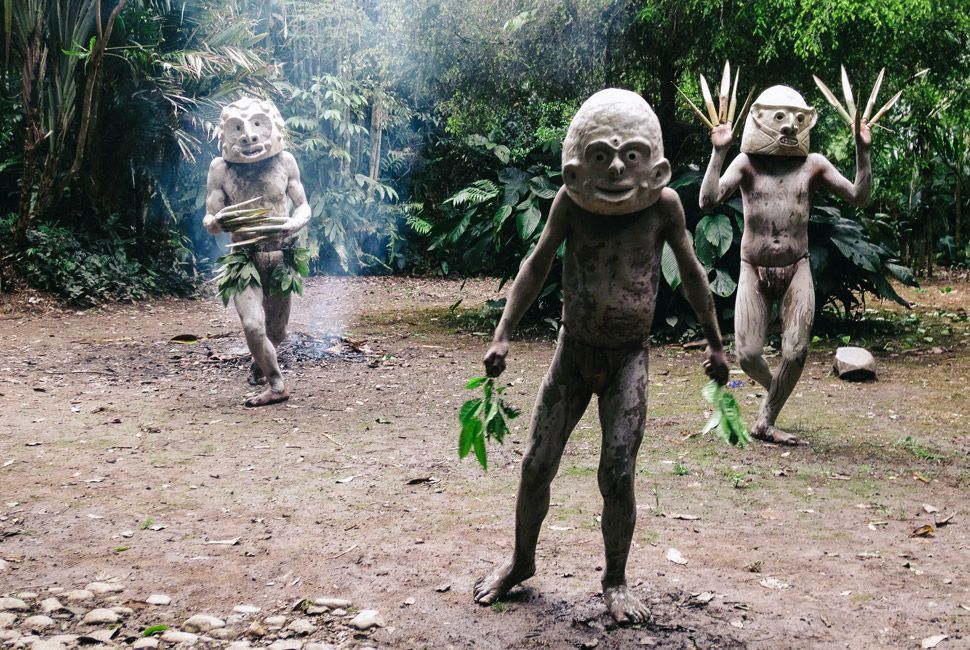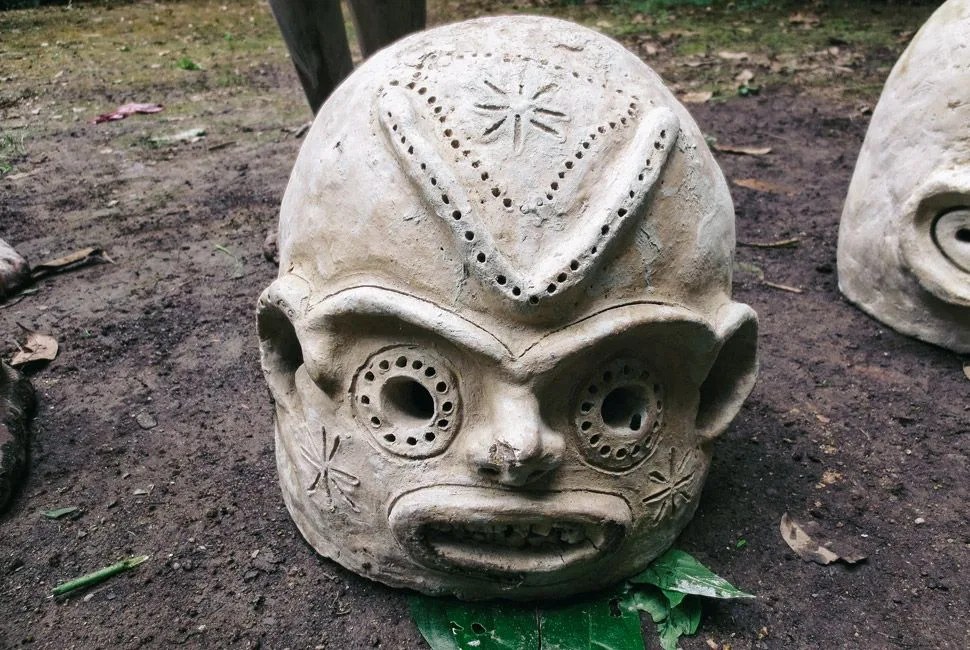7 photos
ROAD N✍TES
Editor’s Note: In Papua New Guinea, tribal warfare is still common. Will McGough watched a reenactment of one of the country’s greatest — and most haunting — underdog stories in person.
A sun-faded wooden shield, split in half, leaned against the side of the hut, its black warrior feathers still intact, shooting straight up from its top. I took the bigger half and put my palm on top, slowly spinning it between my hand and the ground. The front was riddled with small holes, a clear sign that it had actually seen battle and, presumably, done its job in defense of foreign arrows. There were dozens of holes, each a few centimeters deep. I asked one of the tribesmen how old it was, and through a translator, he told me 30 or 40 years. Holding it and seeing the arrow indentations and feeling its weight — about 20 pounds — started to make me feel uncomfortable, so I leaned it back up against the hut, next to its other half. Just then, I heard a stick crack behind my back, and I turned to face the tree line 20 yards away. At first I saw nothing.
I was in Pogla Village outside of Mt. Hagen in the Western Highlands Province of Papua New Guinea, the country due north of Australia that crams a 100 tribes and 700-some languages into one nation. Foreign mining companies like ExxonMobil have infiltrated and transformed the capital of Port Moresby into a city of gated complexes, but up here in the mountains, about 80 percent of the country’s population still lives in small towns and villages. Despite the political and social influences that missionaries and foreign governments have had in the coastal areas, the more secluded upcountry regions have withstood the test of time: their inhabitants still sport traditional tribal clothing and uphold the beliefs of their ancestors.
MORE ROAD NOTES: Following in the Steps of the Donner Party | Exploring Trinidad’s Tar Pits | Traveling in the Myanmar Countryside
Here, lands are really controlled by tribes, just like they have been for hundreds of years. There are no lawsuits to settle disputes; the closest thing these people have to a lawyer is the tribe or clan’s individual shaman, who mediates in a straw hut, collects pig jawbones, hands out relationship advice and helps remove curses that bad apples have bestowed upon themselves or others. Spirituality is a major part of life here in these hillsides, and is also the driving force behind the small “wars” and skirmishes that ultimately settle disputes between clans. Clan and tribal wars are just what they sound like: A hostile conflict between members of two different native families. The easiest analogy, although imperfect, is the bloodshed we see between street gangs here in America, a tit-for-tat struggle of power and respect. Tribes in Papua New Guinea, especially those living in the highlands, are incredibly strict on fairness — meaning, you take one of ours, we take one of yours, an eye for an eye, a taro for a taro.
These clan wars still happen today, and are typically the way tourists get into trouble while visiting the country. Sometimes it’s simply being at the wrong place at the wrong time — like walking through a part of town when a riot breaks out. Other times it’s more complicated. Take, for example, the group of National Geographic researchers who were blamed for the coincidental illness of a young girl during their visit to an upcountry village. (Luckily, the girl survived and the researchers were off the hook). People in Papua New Guinea are extremely friendly, but they do subscribe to lots of old-school beliefs, including witchcraft, that leave room for behavior a Westerner wouldn’t predict, like blaming outsiders for bad luck. But it also leaves room for amazing myths and stories, many of which serve as “parables” and guidance for tribesmen today. My purpose in Pogla was to learn about the country’s most infamous clan war, one that took place in the adjacent Eastern Highlands Province and is recreated for visitors to Pogla as a way of illustrating the role deep-rooted spiritual beliefs play in the culture here.
